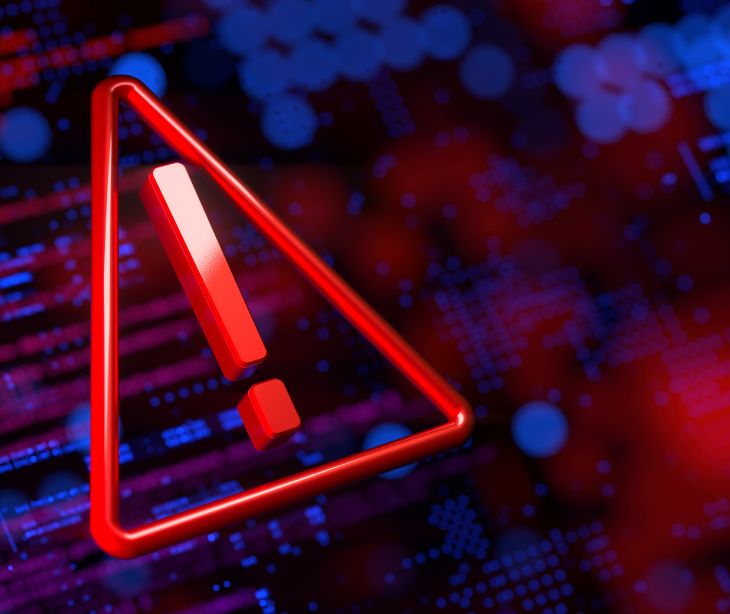
According to Forbes Advisor, 2,365 cyberattacks occurred in 2023, with 343,338,964 victims identified. This demonstrates a 72% increase in data breaches since 2021 and brought the average cost of a data breach up to $4.45 million. It is estimated that it takes approximately 277 days to recover from a data breach. So what is the recovery process?
Cyberattack recovery
Recovering from a cyberattack can be a complex process that involves several steps to ensure your systems are secure and to prevent future attacks. This process begins from the moment the attack is identified. Here's a comprehensive guide to help you through this process:
Immediate response
- Isolate affected systems: Disconnect affected devices from the network to prevent the spread of the attack.
- Assess the situation: Determine the nature and scope of the attack. Identify which systems and data have been compromised.
- Notify stakeholders: Inform internal stakeholders (management, IT staff) and, if necessary, external parties (customers, partners, regulatory bodies).
See also: How to respond to a data breach
Investigation
- Identify the source: Use forensic tools to trace the source of the attack. This could involve analyzing logs, malware samples, and network traffic.
- Preserve evidence: Keep logs, network traffic data, and any other evidence intact for legal and forensic purposes.
- Work with experts: Consider hiring cybersecurity experts to assist with the investigation and recovery process.
Recovery
- Clean systems: Remove malware or any malicious code from affected systems. This may involve wiping and reinstalling operating systems.
- Restore data: Use backups to restore lost or corrupted data. Ensure backups are clean and free from malware.
- Patch vulnerabilities: Apply patches and updates to all systems and software to close security holes exploited by the attackers.
- Change credentials: Reset passwords and review access controls to ensure that no further unauthorized access is possible.
Post-recovery
- Conduct a post-mortem: Analyze the attack to understand how it happened and what can be done to prevent future incidents.
- Improve security measures: Implement stronger security protocols, such as multi-factor authentication (MFA), advanced firewalls, intrusion detection/prevention systems, and regular security audits.
- Train employees: Educate staff on cybersecurity best practices, including how to recognize phishing attempts and other common attack vectors.
- Develop an Incident Response Plan: Create or update your incident response plan to ensure a quicker and more effective response to future incidents.
Documentation and reporting
- Document the incident: Keep detailed records of the attack, your response, and the recovery process.
- Report to authorities: Depending on the severity and nature of the attack, you might need to report the incident to law enforcement or regulatory bodies.
Continuous monitoring
- Monitor systems: Implement continuous monitoring tools to detect and respond to suspicious activity in real time.
- Regular audits: Conduct regular security audits and vulnerability assessments to ensure ongoing protection.
Insurance and legal considerations
- Review cyber insurance: If you have cyber insurance, notify your insurer and review your coverage and claims process.
- Legal advice: Consult with legal professionals to understand any legal obligations and potential liabilities.
Preventing the attack
As the saying goes, “Prevention is better than cure,” but how do you prevent a cyberattack?
- Access controls: Use role-based access controls to ensure that employees can only access data necessary for their job functions. Implementing MFA will add an extra layer of security.
- Regular updates and patching: Ensure that all systems, software, and devices are regularly updated and patched to fix security vulnerabilities.
- Cybersecurity training: Conduct regular training sessions to educate employees on recognizing phishing attacks, using strong passwords, and following best practices for data security.
- Network segmentation: Divide the network into segments to limit the spread of malware and restrict access to sensitive data.
- Firewalls and intrusion detection systems: Implement advanced firewalls and intrusion detection/prevention systems to monitor and block malicious activities.
- Vulnerability assessments: Conduct regular vulnerability assessments and penetration testing to identify and address security weaknesses.
- Compliance audits: Perform regular audits to ensure compliance with regulations such as HIPAA, which mandate specific security measures for protecting patient data.
- Encryption: Encrypt sensitive data both at rest and in transit to protect it from unauthorized
- Develop an incident response plan: Create a detailed incident response plan outlining steps to take in the event of a cyberattack. Regularly test and update this plan.
- Regular backups: Perform regular backups of critical data and systems. Ensure backups are stored securely and are tested periodically for integrity and reliability.
FAQs
How can businesses assess the impact of a cyberattack?
Businesses can assess the impact of a cyberattack by conducting a thorough forensic investigation to determine the extent of the breach. This involves identifying compromised data, evaluating affected systems, and understanding the methods used by attackers
How can multi-factor authentication (MFA) enhance security?
Multi-factor authentication adds an extra layer of security by requiring users to provide two or more verification factors to gain access to a system. These factors can include:
- Something you know (password or PIN)
- Something you have (smartphone or hardware token)
- Something you are (biometric verification like fingerprint or facial recognition)
MFA makes it more difficult for attackers to gain access to systems and accounts, even if passwords are compromised.
How often should businesses conduct security audits?
Security audits must be conducted at least annually or whenever there are significant changes to the network or systems.
Subscribe to Paubox Weekly
Every Friday we'll bring you the most important news from Paubox. Our aim is to make you smarter, faster.




